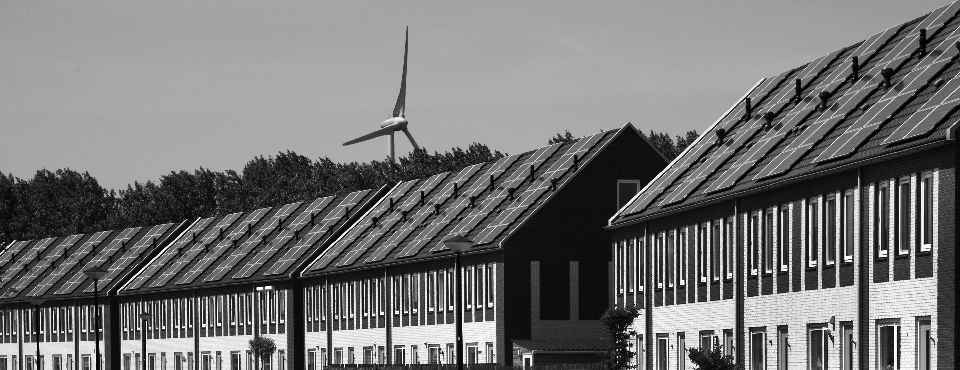
Wind and solar energy on land: the lack of local support
The Climate Agreement states that at least 35 terawatt hours of sustainable electricity must be produced on land by 2030. The plan is to generate about fifty percent of this sustainable energy by means of solar panels (of which a small part in solar parks) and the other fifty percent by wind turbines. This means that in the coming years many turbines and solar parks must appear in the Dutch landscape.
In recent years, however, the Netherlands seems to be lagging behind. We are at the bottom of European lists and are not on track for the 2030 goal. It is all the more surprising that many plans for onshore wind have been postponed until after the municipal elections or simply cancelled. An important reason for this is a lack of local support: many people think sustainable energy is fine, as long as it is not generated in their backyard. An important indicator of local support for wind turbines and solar parks is the change in real estate prices after the construction of a turbine or solar park. The idea is simple: if people find a location less attractive, they want to pay less for it.
Lower home values and local support
Recent research by Martijn Dröes and the undersigned in Energy Policy shows that house prices do indeed fall after the construction of a turbine. Within two kilometres, prices fall by about two to three percent compared to homes where no turbine has (yet) been built. Logically, we find that large turbines closer to the home have greater effects than small turbines far away. Interestingly, only the first turbine within two kilometres has an effect – the horizon can probably only be polluted once.
This decrease in value, especially for taller turbines of more than a hundred metres, may be a reason for policymakers to prefer building small turbines or to abandon turbines altogether and focus on solar parks. To further investigate this, we have therefore also calculated the median decrease in value per megawatt hour generated. This shows that high turbines ultimately come out on top (compared to low turbines and solar parks). It is true that a number of homes are hit harder, but because high turbines generate much more energy, fewer are needed. That is why, in the end, far fewer homes are affected.
How do we achieve the objectives?
If we want the energy transition to be successful, the construction of turbines and solar parks on land is inevitable. At the same time, local resistance to the arrival of the production of renewable energy in a densely populated country like the Netherlands is also difficult to prevent. However, what our calculations show is that only 25 turbines (one percent) are responsible for fifty percent of the loss of value of homes! In other words, some turbines are really in the wrong place and generate a huge loss. In the construction of new turbines, it is therefore necessary to look for locations that are further than two kilometres from a built-up area. Locations along highways, on industrial estates and along canals seem like good candidates.
Nevertheless, there will always be people dissatisfied with the construction of turbines or solar parks in their neighbourhood. I think it is unlikely that better information and endless consultation evenings will change this (as suggested on the government’s website). On the other hand, I think that letting homeowners share in the profits of the turbines or solar parks can be a solution to increase support, because it would be compensation for the loss in home value and any inconvenience experienced. Currently, often only homeowners who live within 500 to 1000 metres of a turbine are involved, but this should be increased to two kilometres.
If we indeed want to generate 35 terawatt-hours of renewable energy by 2030, this requires determination on the part of local policymakers to realise turbines. Solar parks are a nice addition, but not a substitute, since a medium-sized turbine generates about as much energy as no less than 28,000 solar panels. The arrival of a turbine and solar park must be accompanied by clear communication about the decrease in house value and any compensation or profit sharing that the construction of a turbine or solar park entails.
